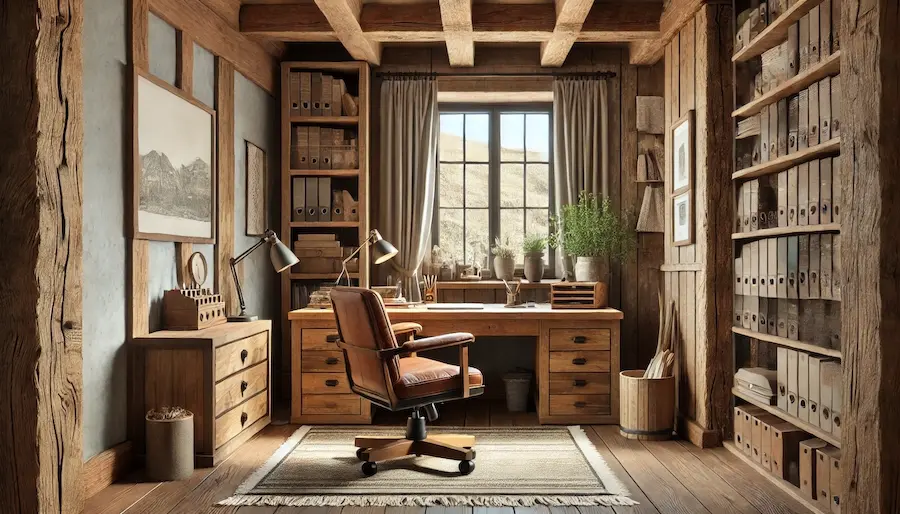Rustic office rooms blend natural materials and earthy tones to create a warm, inviting workspace that fosters productivity and comfort. This article explores their history, key features, applications, considerations for selection, and concludes with insights into their enduring appeal.
History and Origins of Rustic Office Rooms
The rustic design style draws inspiration from rural and farmhouse aesthetics, emphasizing simplicity, natural elements, and handcrafted furnishings. Incorporating rustic design into office spaces has gained popularity as individuals seek to create environments that are both functional and reflective of a cozy, homelike atmosphere.
Key Features of Rustic Office Rooms
- Natural Materials: Utilization of wood, stone, and metal to bring an organic feel to the space. Reclaimed wood desks and exposed brick walls are common elements.
- Earthy Color Palette: Incorporation of warm, neutral tones such as browns, beiges, and greens to create a calming environment.
- Vintage and Reclaimed Furniture: Use of antique or repurposed furniture pieces adds character and a sense of history to the office.
- Textural Elements: Inclusion of woven textiles, rugs, and natural fiber accessories to add depth and coziness.
- Ambient Lighting: Use of soft, warm lighting through lamps and fixtures to enhance the inviting atmosphere.
Applications of Rustic Office Rooms
- Home Offices: Designing a personalized workspace that combines functionality with a homely, comforting aesthetic.
- Corporate Offices: Incorporating rustic elements to create a relaxed and approachable environment for employees and clients.
- Co-working Spaces: Offering a distinctive and cozy atmosphere that appeals to a diverse group of professionals seeking a non-traditional workspace.
Considerations When Choosing Rustic Office Rooms
- Balance: Ensure a harmonious blend of rustic elements with modern office necessities to maintain both style and functionality.
- Lighting: Maximize natural light and complement it with appropriate artificial lighting to prevent the space from feeling dim.
- Ergonomics: Select furniture that provides comfort and supports productivity, even when opting for vintage or reclaimed pieces.
- Personalization: Incorporate personal touches, such as artwork or decor, that reflect individual style while adhering to the rustic theme.
Conclusion
Rustic office rooms offer a charming and comfortable environment that seamlessly blends natural elements with functional design. By focusing on natural materials, earthy tones, and vintage furnishings, these spaces create a welcoming atmosphere conducive to productivity and well-being.
